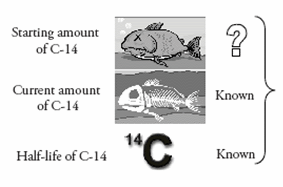Humans began making an impact during the Industrial Revolution. The isotope decreased by a small fraction due to the combustion of fossil fuels, among other factors. The answer to the problem of fluctuating amounts of this important isotope is calibration.
Standard calibration curves are now used for more accurate readings. These curves indicate the changes in Carbon throughout the years and modifies the end result of the tests to reflect that. Though the calibrated date is more precise, many scholars still use the uncalibrated date in order to keep chronologies consistent in academic communities. As the lecture detailed, it is only accurate from about 62, years ago to 1, A. There is a sizable amount of time before and after that period that cannot be investigated using this method.
Also, archaeologists cannot use their hands to touch the samples or smoke near them.
Related Stories
They risk seriously altering the result of the test. If an archaeologist wanted to date a dead tree to see when humans used it to build tools, their readings would be significantly thrown off. This is because radiocarbon dating gives the date when the tree ceased its intake of Carbon—not when it was being used for weapons and other instruments! Since trees can have a lifespan of hundreds of years, its date of death might not even be relatively close to the date the archaeologists are looking for.
Is Carbon Dating Reliable? | media-aid.com
Thorough research and cautiousness can eliminate accidental contamination and avoidable mistakes. This standard content of C14 can then be used for wood not associated with a historically documented date. Dates up to this point in history are well documented for C14 calibration.
For object over 4, years old the method becomes very unreliable for the following reason: Objects older then 4, years run into a problem in that there are few if any known artifacts to be used as the standard. Libby, the discoverer of the C14 dating method, was very disappointed with this problem. He understood that archaeological artifacts were readily available. After all, this what the archeologist guessed in their published books. Some believe trees are known to be as old as 9, years.
They use tree rings as the calibration standard. A lot of people doubt this claim for various good reasons I wont go into here. We believe all the dates over 5, years are really compressible into the next 2, years back to creation. So when you hear of a date of 30, years for a carbon date we believe it to be early after creation and only about 7, years old. If something carbon dates at 7, years we believe 5, is probably closer to reality just before the flood.
Robert Whitelaw has done a very good job illustrating this theory using about 30, dates published in Radio Carbon over the last 40 years.
Is Carbon Dating Accurate?
One of the impressive points Whitewall makes is the conspicuous absence of dates between 4, and 5, years ago illustrating a great catastrophe killing off plant and animal life world wide the flood of Noah! I hope this helps your understanding of carbon dating. If you have any more questions about it don't hesitate to write.
I just listened to a series of lectures on archaeology put out by John Hopkins Univ. The lecturer talked at length about how inaccurate C14 Dating is as 'corrected' by dendrochronology.
